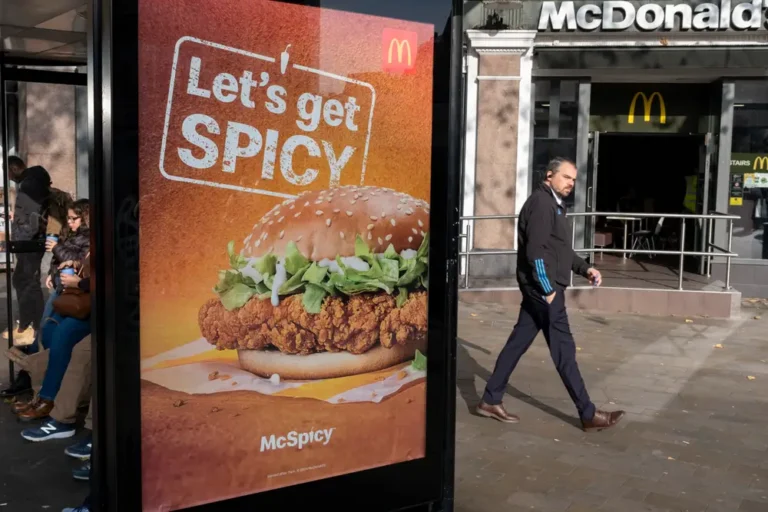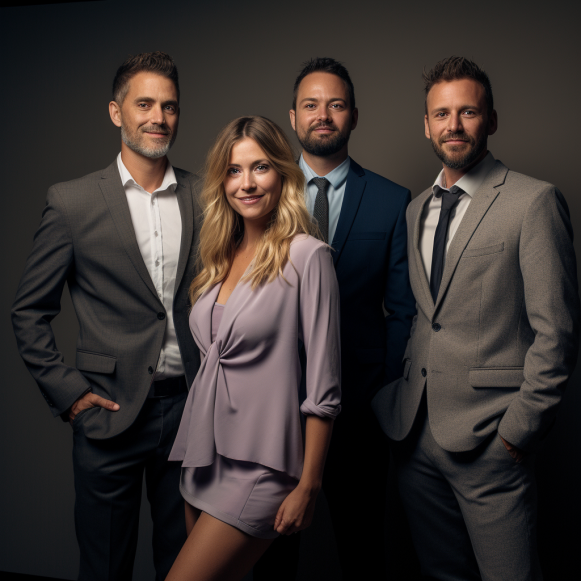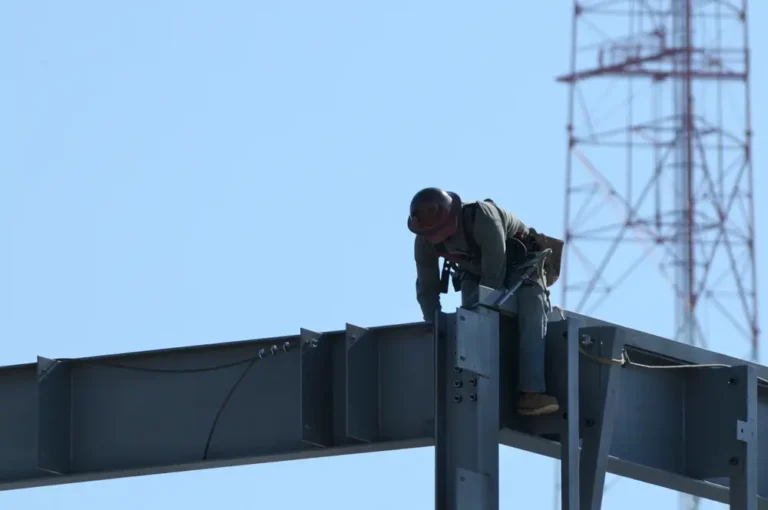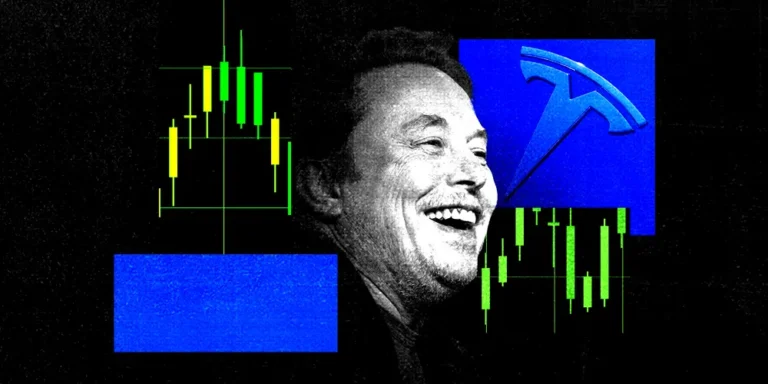Inside 2 major groups that run NIL deals for Big Ten student-athletes as ‘collectives’ gain enormous power and influence in college sports

- Collectives are dominating the NIL industry, backed by boosters, fans, and businesses.
- But how they operate is not well understood across college sports.
- Insider spoke with two NIL collectives at major universities to learn how these organizations work.
One of the most perplexing aspects of college sports is the rapid rise and dominance of “collectives.” Consider them to be powerful startups — they’re new to the space, but they’re responsible for 80% of the money in the $1 billion name, image, and likeness industry.
Almost every college or university has at least one group that helps student-athletes participate in non-contact sports. Although they are not officially part of the schools, coaches can now point to a collective and encourage fans to support it.
Collectives were viewed as “hush-hush” by many in the industry during the first year of NIL, according to Opendorse marketplace’s Braly Keller. However, Keller claims that there has been a significant “mindset shift among schools” since then, and collectives have come to dominate the industry.
Collectives have amassed significant power and influence in the last year, particularly in the recruiting landscape. Even though they cannot directly speak with recruits, athletes considering a school can learn about the collective work done by current athletes. Fans also contribute to collectives in the hopes of attracting and retaining top talent.
However, how these organizations are run is not well understood in the industry.
Insider spoke with leaders of two Big Ten Conference collectives — Happy Valley United, which supports students-athletes at Penn State, and Dinkytown Athletes, which supports students-athletes at the University of Minnesota — to learn how these businesses operate, fundraise, make deals and content, market themselves, and more.
Happy Valley United, named after the State College, Pennsylvania region, is a for-profit organization with a staff of nine and a parent company that oversees contracts, partner companies, and charities. It recently raised nearly $140,000 from fans in three weeks. In June, the company was formed from two existing Penn State collectives.
Dinkytown Athletes, named after the neighborhood that surrounds the University of Minnesota, is a “passion project” run by former Minnesota football player Derek Burns and his business partner, a lifelong Golden Gophers fan, with the assistance of a few part-time students. The collective was founded in September 2022, and members receive exclusive content, merch, and events.
How collectives are formed and funded
There are no rules dictating how to set up or run a collective, and some have succeeded while others have failed.
Many collectives are run by larger organizations such as Student Athlete NIL, also known as SANIL, or Blueprint Sports, the parent company of Happy Valley United, which powers collectives at 19 colleges and universities across the country.
Others, such as Dinkytown Athletes, are slimmer. According to Burns, at least 85% of the money coming into Dinkytown Athletes goes to student-athletes, with the remaining funds going toward running the business, which includes paying the collective’s staff, which is mostly made up of students who work part-time in areas like graphic design, social media, and event coordination. He stated that the collective is currently not profitable.
Both collectives generate revenue in three ways:
- collaborations with businesses and organizations, as well as corporate sponsorships
- monthly or annual membership fees ranging from $10 per month to $5,500 per year
- direct donations to the collective or a partner nonprofit
“It’s very similar to a lot of fundraising arms within the athletic department or your corporate sponsorship arm within the athletic department,” said Brandon McCladdie, executive director for football at Happy Valley United and a Penn State alumnus.
Dinkytown Athletes has secured student-athlete contracts with local and national businesses in the Minneapolis area. It also stated that it is planning partnerships with an apparel vendor and an adult beverage company that will generate passive income without the involvement of student-athletes. The collective also collaborates with the university’s licensed apparel vendor to sell merchandise bearing official trademarks and logos.
Meanwhile, Happy Valley United is primarily focused on corporate partnerships and working with companies to secure deals for athletes, according to McCladdie, but it is expanding its work with individual philanthropists who could contribute to the fund.
Membership is essential to both collectives because it attracts partners. Members of the collectives receive exclusive content, merchandise, special events with athletes, and other benefits. Minnesota fans can watch “Dinkytown Moms,” a video series about student-athletes and their mothers, attend barbecues and tailgates, and play online games with an athlete. Penn State fans can purchase exclusive merchandise promoting the football team’s annual White Out game, as well as attend events with athletes such as a fall festival with pony rides and pumpkin decorating.
“It’s been pretty rewarding giving fans an inside look at the student-athlete experience and getting some extra coverage and exposure for the athletes to the fan base,” Burns said.
Dinkytown Athletes and Happy Valley United both declined to reveal their membership numbers.
Both collectives can accept money from fans who aren’t members directly. Donations to Happy Valley United are also directed to the Blueprint Sports Foundation, which collaborates with local nonprofits to get athletes involved in the community. Nonetheless, its leaders recognize that a few checks from wealthy donors will not be enough to keep the collective afloat, and they are seeking a more sustainable model with commercial partners and memberships
How do collectives collaborate with college athletes?
The primary goal of collectives is to provide college athletes with NIL opportunities.
According to Burns, the majority of the NIL contracts Dinkytown Athletes has arranged for the school’s student-athletes pay them to engage with fans through video shoutouts, interviews, live appearances, and other means. He estimates that athletes earn $600 per hour for fan engagement work done through the collective.
A quarter of Dinkytown Athletes’ NIL deals have been business collaborations between Minnesota athletes and companies such as Dove, Northwestern Mutual, and PNC Bank. Those who can pay more but are less frequent.
According to McCladdie, Happy Valley United’s NIL work also includes engaging with the local community, including the collective’s partner charities. The collective has connected student-athletes with companies and charities that they can promote on social media (or on State College billboards), organizes autograph sessions and paid appearances, and assists in the organization of camps and clinics.
It negotiates contracts with companies and organizations and, in general, keeps student-athletes out of those meetings, according to McCladdie.
According to both Burns and McCladdie, NIL can assist student-athletes in developing business skills and planning for life after sports. According to Burns, some athletes have expressed interest in working for or interning for a brand after working with them on a NIL deal.
“There is definitely an entrepreneurial and professional development aspect to this that I don’t think is talked about enough,” said Burns.
How do collectives get donors and brands?
Fundraising keeps collectives going — but it takes a lot of outreach and marketing.
Both collectives are active on social media, looking for ways to engage both “die-hard” and “casual” fans at their respective schools, as well as persuade local businesses to collaborate with them.
Dinkytown Athletes developed relationships with rights holder Gopher Sports Properties, which allowed the collective to use trademarks and logos and officially advertise at games and to season-ticket holders. Companies that previously advertised with Gopher Sports Properties are now collaborating with the collective to include and compensate athletes for campaigns.
According to McCladdie, Happy Valley United is building its brand through media attention and community-based “grassroots” efforts. He believes it is critical to be present at all Penn State athletics events in State College, particularly those for season ticket holders and existing booster groups.
“I’ll be there, shaking as many hands as I can,” McCladdie said of an upcoming booster-group happy hour. “We’re developing those relationships as we go.”





